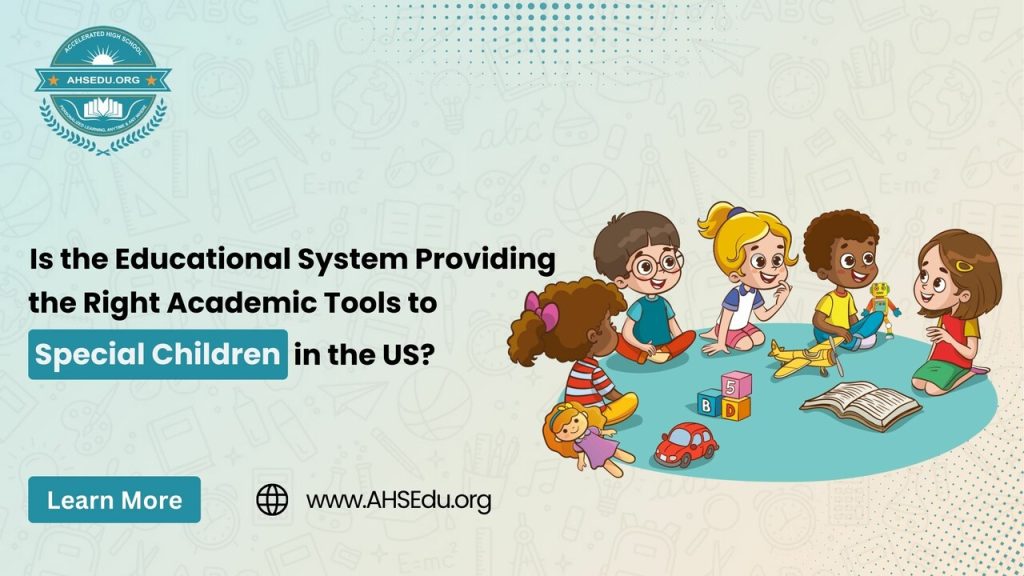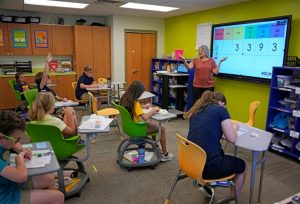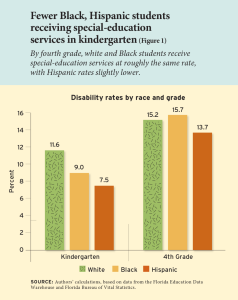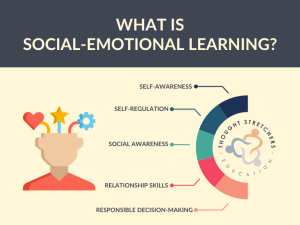
Educating children with special needs has come a long way in the United States, but serious gaps remain. About 7.5 million students ages 3–21 receive special education services under the Individuals with Disabilities Education Act (IDEA). This represents roughly 15% of all K-12 students nationwide. IDEA guarantees these children a “free appropriate public education” tailored to their needs, typically through Individualized Education Programs (IEPs). In theory, schools must provide “the right academic tools” – from specialized instruction and assistive technology to trained staff – to help every child with a disability learn. The big question is whether schools are truly delivering on that promise. Many parents and advocates worry the answer is no, citing widespread shortages of qualified personnel, insufficient resources, and uneven support across districts. In this article, we examine the current state of special education in the U.S., the key challenges preventing children from getting the tools they need, and what can be done to improve the situation.
The State of Special Education in the U.S.
After decades of progress, students with disabilities are now more included in public education than ever. Most attend local public schools, often in general education classrooms with supports. Federal law (IDEA, originally enacted in 1975) requires public schools to identify students with disabilities and provide necessary accommodations or specialized instruction. Thanks to these mandates, educational access has improved dramatically since the 1970s, when many children with disabilities were entirely excluded from public schools.

Elementary math teacher Margie Howells teaches a 5th grade class at Wheeling Country Day School in Wheeling, W.Va. – Gene J. Puskar/AP
However, recent trends show the demand on special education is rising, adding pressure on the system. From 2017 to 2023, the number of students served under IDEA surged by nearly 1 million, approaching 7.9 million in 2023. Students with disabilities now account for about one in seven public school students. Notably, the prevalence of certain disabilities is increasing – for example, autism diagnoses among 8-year-olds have climbed to 1 in 36 (up from 1 in 44 just a few years prior). Educators also report more students with complex learning and behavioral needs, potentially exacerbated by pandemic-related learning loss and mental health challenges. In short, special education is serving more children with diverse needs than ever, even as overall school enrollment declines. This rise in special-needs enrollment puts a spotlight on whether schools have the capacity – the tools, funding, and staff – to effectively serve every child.
Encouragingly, awareness and legal frameworks are in place. All qualified students have IEPs that outline their learning goals and required supports. Schools are required to provide assistive technology if an IEP team finds it necessary. Disability rights in education are supported by laws like the ADA and Section 504, promoting inclusion. Yet having a legal right on paper is one thing; delivering actual support in the classroom is another. The everyday reality for many families is that special education services can be inconsistent – highly effective in some schools, but inadequate in others. Whether a child truly gets the “right academic tools” often depends on factors like the school’s funding, the availability of specialists, class sizes, and the training level of teachers. Unfortunately, these factors vary wildly from one district (or even one school) to another.
Key Challenges in Providing the Right Tools
1. Chronic Shortage of Special Education Professionals:
Perhaps the most urgent challenge is the shortage of qualified special education teachers and support staff nationwide. This long-standing deficit has reached crisis levels in recent years, as retirements and burnout outpace new entrants into the field. In one national survey, 82% of special educators (and related service providers) said there are not enough professionals to meet the needs of students with disabilities. In other words, schools across the country are scrambling to fill special ed positions but demand far exceeds supply. The fallout is that many students don’t have a certified special educator for instruction, or they see revolving substitutes and aides with minimal training.
This staffing shortfall extends beyond teachers. Schools also lack sufficient support personnel – such as school psychologists, counselors, speech therapists, occupational therapists, and paraprofessionals – who are crucial for special education. A 2023 government report found that only 20% of students with disabilities attended a school that had all four key types of support staff (nurse, counselor, psychologist, and social worker) on campus. In other words, 4 out of 5 special-needs students are in schools missing at least one vital expert. Many attend schools with no social worker (over 50%) or no psychologist (around 40%) on staff. This lack of interdisciplinary support makes it harder to address the full range of student needs – academic, behavioral, and emotional.
2. Insufficient Funding and Resources:
Another fundamental issue is money. Specialized instruction often requires smaller class sizes, one-on-one aides, therapy equipment, adaptive software, etc. Yet funding for special education has not kept pace with growing needs. The federal government currently provides only about 10% of the average per-pupil expenditure for special education. (IDEA originally envisioned federal funding closer to 40% of costs, but that target has never been met.) The remaining 90% must come from state and local sources, which can vary greatly by community wealth. The result: many districts are stretched thin, unable to hire enough staff or purchase up-to-date instructional tools. One survey found that 70% of public schools reported special ed teacher shortages in the 2021–22 year, often citing lack of funding to offer competitive salaries. When budgets are tight, essentials like assistive technology or curriculum modifications may be delayed or denied, even if listed in a child’s IEP.
Schools without adequate funding face tough choices. Some mainstream classrooms integrate students with disabilities but without extra support, straining general teachers. Other schools still rely on segregated “self-contained” classrooms for special education, which can sometimes become a dead-end if not well-resourced. Underfunded programs and unqualified teachers were cited as persistent issues by advocates, alongside limited access to extracurricular activities for special-needs students. These gaps in resources lead to an unequal educational experience – a child with disabilities in a well-funded district might get cutting-edge assistive software and a dedicated aide, while a similar child elsewhere struggles without those supports.
3. Training and Implementation Gaps:
Even when schools do have useful tools or technology available, effectively integrating them is a challenge. Teachers and staff need time and training to learn specialized techniques – something often in short supply. The Government Accountability Office found that many districts cite “insufficient time for professional development” on special education strategies as a major obstacle. General education teachers, who increasingly teach inclusive classes with both disabled and nondisabled students, may receive minimal training on accommodations or co-teaching methods. This leads to situations where assistive technologies or adaptive curricula are underutilized simply because educators haven’t been trained or given planning time to incorporate them.
Additionally, there can be communication gaps and fragmentation in how services are delivered. Special education teachers sometimes work in isolation from general teachers, making it hard to coordinate instruction. The GAO noted “insufficient collaboration between general and special education staff” as a common problem that can snowball into unmet student needs. Likewise, schools don’t always communicate well with parents, leaving families unsure of what supports their child is (or isn’t) receiving. These implementation issues mean that even when the right tools exist on paper (in the IEP), the student may not fully benefit in practice.
4. Impact on Student Outcomes:
The above challenges directly affect student learning and outcomes. When a child doesn’t get appropriate support, they are more likely to fall behind academically or develop behavioral issues out of frustration. National data show that students with disabilities as a group have lower achievement and graduation rates compared to their peers without disabilities. As of 2020, only 75.9% of students with disabilities (ages 14–21) graduated high school with a regular diploma, while 14% dropped out entirely. By contrast, the national graduation rate for all students is around 85–86%, with a dropout rate closer to 5%. This gap illustrates that many special-needs students are not reaching their full academic potential under the current system.

Parents of special children often see the system’s shortcomings first-hand. It’s not uncommon for families to feel they must fight the school to get services – or even resort to legal action. In fact, formal disputes (due process complaints) in special education jumped 16% in one year (2021–22 to 2022–23), indicating rising conflict between families and schools over unmet needs. These complaints typically involve parents contesting that the school failed to provide adequate support as required by the IEP or law. The increase in disputes is a symptom of a strained system: schools are struggling under staffing shortages, and parents are understandably pushing for their children’s rights. “We’re in this terrible Catch-22,” said one special education administrator, referring to the challenge of resolving parent concerns amid severe educator vacancies (k12dive.com).
Another consequence of system shortfalls is that many parents seek alternatives outside the public schools. Homeschooling of special-needs children has notably risen. By 2023 an estimated 38% of homeschoolers had special needs, nearly three times the representation of special needs in public schools (14%). Often these parents turned to home education after their child “was in public school and not making academic progress.” In fact, 61% of parents who started homeschooling a special-needs child did so because their child was struggling in public school without sufficient support. This trend highlights how, for a significant minority of families, the school system is not providing the right tools, forcing them to take on the challenge themselves.
Are There Improvements on the Horizon?
Despite the sobering challenges, efforts are underway to bridge the gaps. Education leaders and policymakers recognize that investments in special education benefit everyone in the long run. Some positive developments include:

While these efforts are encouraging, systemic change is slow. For the foreseeable future, parents of special children must often advocate persistently to ensure their kids get what they need. The educational system wants to provide the right tools – but due to the challenges outlined, it doesn’t always succeed. As a result, many families supplement school services with private tutoring, therapy, or educational programs; others choose alternative schooling options.
Empowering Special Kids – How Parents Can Take Action
For parents who feel their child isn’t getting sufficient support, there are constructive steps to take. First, know your child’s rights under IDEA and Section 504 – if an IEP isn’t being followed, request a meeting and come prepared with observations and data. Often, being a vocal advocate can spur a school to arrange additional services or assessments. Connecting with parent advocacy groups or a special education attorney (if needed) can give you guidance on navigating the system.
Second, consider outside resources to augment your child’s learning. This might include after-school programs, therapy services, or online learning platforms specifically designed for children who need a different approach. In recent years, online and at-home learning options have expanded greatly for special-needs students – accelerated by the pandemic’s remote schooling experience. Some children actually thrived in virtual settings where they could learn at their own pace with fewer distractions.
One promising resource is AHS Education – a nonprofit online learning platform offering a fully standardized curriculum for grades 1–5 in an interactive, flexible format. Such platforms can be a game-changer for special kids who need individualized pacing or alternative teaching methods. For example, AHS provides short, engaging video lessons with built-in quizzes, 100+ practice questions per skill, and printable worksheets. The program is self-paced and adaptive, allowing children to move at their own speed and repeat lessons as needed without pressure. Parents get dashboards to track progress and see reports, so they can closely monitor their child’s growth. Importantly, the curriculum is aligned to U.S. state standards, meaning it can reinforce or substitute what the local school is teaching, but in a more accessible way for the child.
Crucially, cost is not a barrier – AHS Education offers generous scholarships and even free trial access so that families can get started without financial burden. The mission is to make quality education available to every child, including those who might be struggling in a traditional classroom. For parents of special children, platforms like AHS can either supplement the child’s school learning or serve as a homeschool curriculum if you choose that route. It puts more tools directly into parents’ and students’ hands – interactive lessons, practice exercises, and personalized support – which can dramatically enhance a child’s learning experience.
Bottom line: While we continue to push for improvements within the public education system, parents don’t have to wait passively. You can seek out and utilize the academic tools that your child needs right now. This might mean working with the school to secure services, or finding external programs that fill the gaps.
Conclusion
So, is the U.S. educational system providing the right academic tools to special children? At this point, it’s fair to say that the system is trying, but often falling short. The legal commitment to educate all children is there, and there are countless dedicated teachers doing wonderful work with the resources they have. Yet structural challenges – staffing shortages, funding shortfalls, inconsistent training – prevent many students with disabilities from receiving truly appropriate education tailored to their needs. Too many children still go without the individualized attention, specialized materials, or therapy supports that would help them excel. As a society, there is work ahead to fulfill the promise of special education. That includes investing in educators, embracing inclusive practices, and leveraging technology and innovation to better serve each learner.
In the meantime, parents and communities play a pivotal role. Advocacy remains key – both to push school systems to improve and to secure what each child requires day-to-day. And as highlighted, parents can also empower their children through alternative solutions when the traditional system isn’t enough. Every child deserves the opportunity to reach their highest potential, and that is achievable when they have the right tools and support.
If you’re a parent looking to enhance your child’s learning journey, consider signing up your child for free at AHSEdu.org. AHS Education’s online platform is designed to make learning easier for special kids – with engaging lessons, individualized pacing, and comprehensive support aligned to state standards. Join for free today and give your child access to the academic tools they need and deserve to thrive. Together, we can make sure no child is left without the support they need to succeed.

AHSEDU.org offers personalized learning for every student. With a curriculum standardized with USA State Standards, Free interactive videos, Fun and interactive learning content, Constructive assessments, and take-home worksheets we address the unique educational needs of each learner to ensure success.